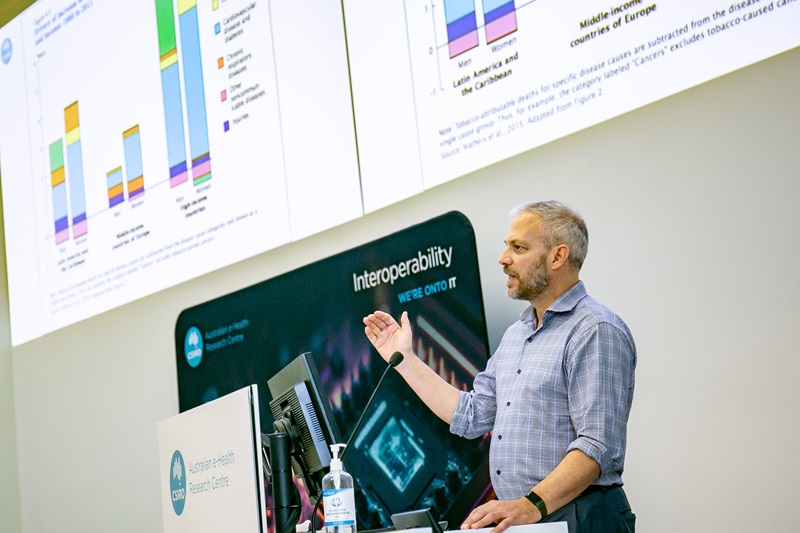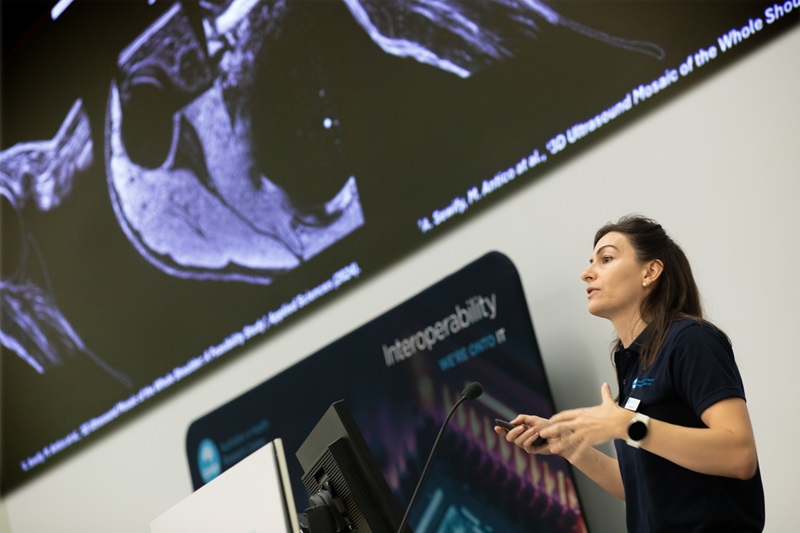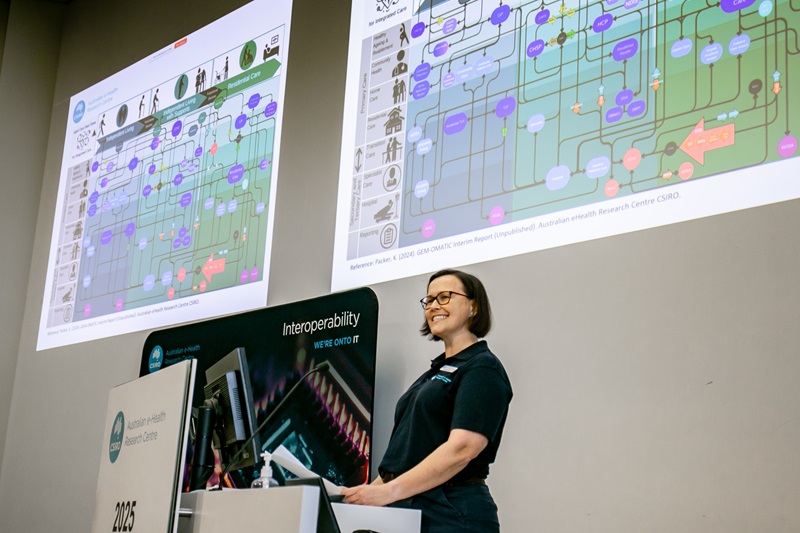Digital Health Innovations: Australian Researchers Leading the Way
By Morgan Gilbert and Naomi Stekelenburg
Key Points
- AI-driven research is enhancing vaccine effectiveness through targeted pathogen analysis.
- Wastewater analysis enables early detection of emerging viruses, improving public health responses.
- The AEHRC Colloquium highlighted key areas like disease prevention, aged care, and equitable healthcare access.
This week, the Australian e-Health Research Centre (AEHRC) hosted its 21st Annual Research Colloquium, showcasing the latest trends and innovations in digital health. The event, attended by over 300 people both in person and online, provided a glimpse into the future of healthcare. From AI-driven vaccine research to cutting-edge wastewater analysis, the work presented is poised to revolutionize public health. Here’s a look at the highlights.
Innovative Technologies for Pandemic Prevention
Preventing the next pandemic requires the robust detection, monitoring, and prevention of pathogen spread. In line with this, researchers at the AEHRC Colloquium revealed digital solutions for every stage of pathogen control, as the COVID-19 pandemic clearly demonstrated how crucial these aspects are.
One prominent area of focus is in the development of antimicrobial-resistant pathogen surveillance and response platforms. Aminath Shausan, for example, is part of a team focused on forecasting and mapping antimicrobial resistant infections in remote and regional areas of Australia.

Director of Health and Biosecurity, Brett Sutton, presents at the AEHRC Colloquium.
Another key area is AI-driven vaccine research. Laurence Wilson’s team is using artificial intelligence (AI) to understand why some individuals respond more effectively to COVID-19 and flu vaccinations. By analyzing data, they aim to identify the specific pathways triggered by vaccines and those necessary for success. This research helps identify the best targets within pathogen genomes for vaccine development, leading to more effective vaccines. As part of a collaboration with the Herston Infectious Diseases Institute, the event featured a showcase of additional projects in this domain.
Jatinder Sidhu and his team are using wastewater analysis to detect viral pathogens. Monitoring viral DNA in wastewater allows researchers to identify emerging viruses early and track their spread, bolstering the ability to develop timely public health responses. Researchers from AEHRC are also working on infection control platforms that analyze data in real-time to simulate outcomes, providing health officials with the opportunity to mount earlier and more effective responses.
Artificial Intelligence and Machine Learning Advancements
AI and machine learning (ML) are transforming healthcare, with a focus on developing tools that are safe, ethical, and trusted. One of the most innovative presentations at the Colloquium was centered on wearable ultrasound technology.

Research Scientist Maria Antico presents her work on wearable ultrasound technology.
AEHRC scientists are using AI and ML to create wearable ultrasound devices that can be used remotely, without specialized training. Maria Antico, in collaboration with the Queensland University of Technology (QUT), is working on a platform that uses AI to interpret the images and provide results. This technology has even been discussed for potential use by astronauts during space travel.
Pierrick Bourgeat also presented his team’s research using AI to improve the analysis of positron emission tomography (PET) images. This promises earlier diagnosis of Alzheimer’s disease, which would be critical to early-stage treatment, slowing disease progression.
Improving Data Interoperability and Patient Care
Effective healthcare relies on high-quality data that is effectively collected, stored, and shared. To ensure this, interoperability is vital. Liesel Higgins presented findings from the recent report, “Australia’s Aged Care Data Landscape: Gaps, Opportunities, and Challenges.” The report identified several gaps in interoperability in the aged care sector and made recommendations for addressing them, to ensure the best possible patient outcomes.

Liesel Higgins presents findings from the ‘Australia’s aged care data landscape’ at this year’s AEHRC Colloquium.
John Grimes discussed his team’s work integrating software focused on calculating a person’s risk of cardiovascular disease into general practitioner systems. This innovation would improve the ability to prevent cardiovascular disease, one of the leading causes of death in Australia.
Ensuring Equitable Healthcare Access
The needs of Australians vary widely, and everyone deserves access to effective healthcare. Researchers from AEHRC’s Indigenous Health Team collaborated with the Child and Adolescent Health Service in Western Australia to create Kara-Care, a digital ‘yarning’ tool. This platform enhances Aboriginal health service delivery in the Pilbara region. When fully implemented, this tool can decrease patient burden and provide clinicians with access to critical patient data at the point of care.
Implementation and Impact
The AEHRC colloquium offered a glimpse into the future of digital health. The event’s researchers are working to bring this technology into the real world. Yan Chia and Jason Dowling discussed linking innovation and impact, ensuring that new tools and software meet strict quality standards and are ready for the market. Their work focuses on translating innovations into practical solutions that meet the needs of the community.


